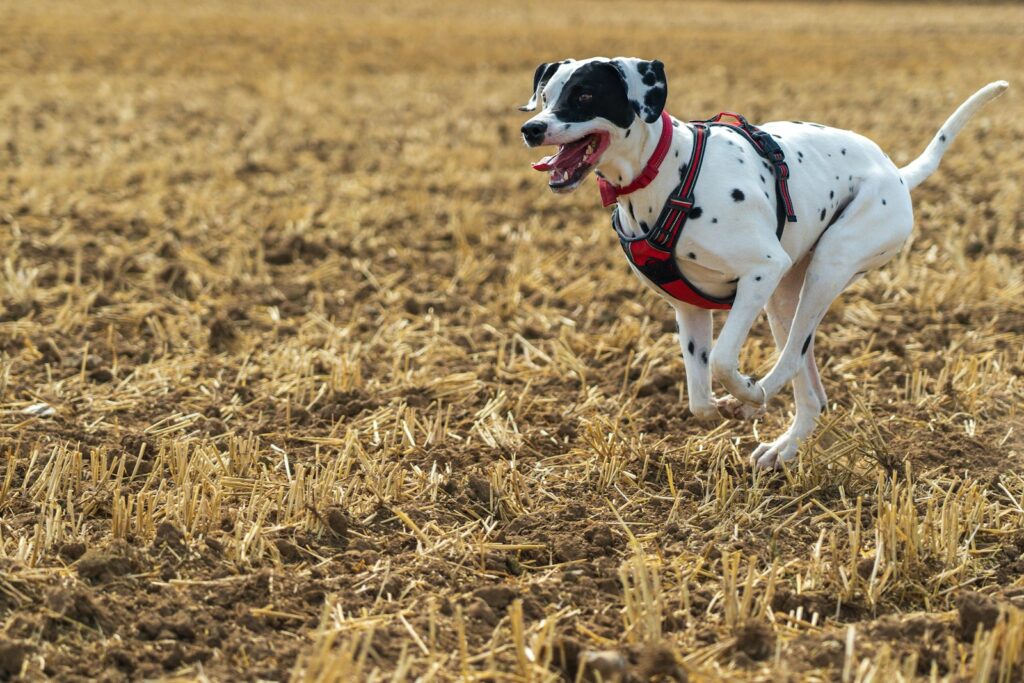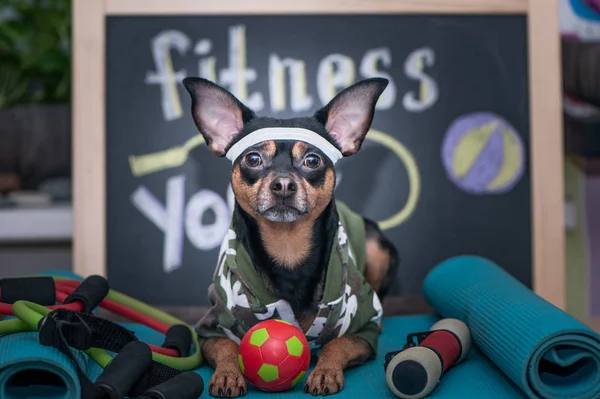Working with your dog on treadmill training is steadily gaining popularity, and for good reason. Whether you’re dealing with bad weather, a busy schedule, or looking to add variety to your pet’s exercise routine, having your dog use a treadmill can be a game-changer. But how do you introduce your pup to this machine and ensure it’s safe, effective, and fun?
This guide will walk you through everything you need to know about treadmill training for dogs, from choosing the right equipment to overcoming common challenges. By the end of this article, you’ll understand why treadmill exercise could be the perfect addition to your dog’s fitness routine.

Why Regular Exercise Is Vital for Dogs
Regular exercise is essential for maintaining your dog’s overall health and well-being. Here are some of the key benefits and reasons why incorporating consistent physical activity into your dog’s routine is so important:
- Improved Physical Health: Just like humans, dogs need exercise to keep their bodies in top shape. Regular physical activity helps maintain a healthy weight, supports cardiovascular health, and improves muscle tone and joint flexibility. It can also reduce the risk of obesity-related diseases such as diabetes and arthritis.
- Mental Stimulation: Exercise provides mental enrichment for your dog by offering new sights, smells, and experiences. This mental stimulation reduces boredom and lowers the chances of destructive behaviors like chewing furniture or excessive barking.
- Enhanced Behavior: A well-exercised dog is generally calmer and better behaved. Physical activity helps release pent-up energy, reducing hyperactivity, anxiety, and restlessness. Regular workouts also make dogs more relaxed when at home.
- Stronger Bond with Owner: Engaging in exercise together strengthens the bond between you and your dog. Whether it’s a simple walk, a game of fetch, or treadmill training, these activities create trust and deepen your relationship.
- Longevity and Quality of Life: Dogs that stay active typically live longer and experience a higher quality of life. Exercise helps slow down the aging process, keeping your furry friend youthful, happy, and agile well into their senior years.
- Supports Natural Instincts: Many dog breeds are naturally energetic and bred for tasks that require physical activity. By providing regular exercise, you allow them to channel their energy productively and fulfill their innate instincts, such as running, retrieving, or exploring.
Ensuring that your dog gets regular exercise is not just about physical health—it’s a holistic approach to keeping them happy, healthy, and well-balanced. Tailor your dog’s exercise routine to their age, breed, and health needs, and watch them thrive!

Dog Treadmills vs. Human Treadmills
When it comes to training a dog on a treadmill, many might wonder why they shouldn’t simply use a human treadmill. While it’s possible, dog treadmills offer distinct advantages that make them a safer and more effective choice for pets.
Here are the key differences:
- Size and Length: Dog treadmills are designed to accommodate the natural gait of most dogs, whether they’re small or large dogs, providing ample space for four paws.
- Speed and Controls: Unlike human treadmills, dog treadmills often have lower speed settings to cater to a dog’s natural pace. Dog controls are also tailored for shorter, slower sessions.
- Side Panels: Many dog treadmills come with side panels to encourage focus and prevent your pup from jumping off during treadmill training.
- Noise Levels: Electric dog treadmills are designed to operate quietly to avoid startling your dog.
These features make stationary treadmills for dogs a safer option, ensuring your pet gets the benefits of exercise without the risk of injury.
Treadmill Training Basics
Treadmill training is not as simple as placing your dog on a treadmill and hitting “start.” Here’s a step-by-step guide to get your dog started on this fitness journey.
1. Choose the Right Treadmill
Opt for a dog-specific treadmill that suits the size of your pet. For small dogs, a compact treadmill works best, while large dogs require a machine with a longer belt. Ensure the treadmill has an appropriately fitted harness option for safety.
Selecting the right treadmill for your dog involves carefully considering their size, energy level, and specific needs. Here are some key factors to keep in mind when making your choice:
- Size and Weight Capacity: One of the most important aspects to look for is a treadmill that suits your dog’s size. Ensure the running area is large enough for your dog to run comfortably, and verify that the treadmill’s weight capacity exceeds your dog’s weight to ensure smooth operation and durability.
- Speed and Adjustability: Dogs have varying energy levels, so choose a treadmill with adjustable speed settings to accommodate your dog’s pace, from a gentle walk to a brisk run. This is especially useful if you have a growing puppy or multiple dogs with different activity levels.
- Noise Level: Some dogs are easily startled by loud noises, so opt for a treadmill designed with a quiet motor. A quieter operation will make the treadmill more appealing to your dog and help them adapt more easily to using it.
- Safety Features: Safety should always come first. Look for features such as side rails to keep your dog secure and prevent them from stepping off the treadmill while in motion. An emergency stop mechanism can also be vital to halt the treadmill instantly if needed.
- Portability and Storage: Consider where you plan to keep the treadmill and whether you’ll need to move or store it frequently. Many dog-specific treadmills are foldable or easy to transport, which is ideal for saving space in your home.
- Purpose-Built Design: While some owners adapt human treadmills for dog use, it’s preferable to choose a treadmill designed specifically for dogs. These are tailored to their unique gait and comfort, ensuring a safer and more effective experience.
By taking these factors into account, you can select the best treadmill to match your dog’s individual requirements. Introduce the treadmill gradually to help your dog become comfortable with it, and always supervise their sessions to ensure a safe and productive workout.
2. Introduce the Treadmill Slowly
Dogs are naturally curious but can also be cautious around unfamiliar objects. Start by letting your dog sniff and stand near the treadmill while it’s off. Use treats and positive reinforcement to create a positive association with the machine.
3. Start Slow
Once your dog feels comfortable, turn the treadmill on at the lowest speed setting. Allow your dog to walk at their own pace—there’s no need to rush. Gradually increase the speed as your dog becomes more confident.
4. Use a Leash and Harness
Always use a leash and an appropriately fitted harness to guide your dog and ensure they stay safe on the treadmill. Never force them to stay on the machine if they appear scared or uneasy.
5. Keep Training Sessions Short
Short, frequent sessions are better than long, tiring ones. Start with 5–10 minutes and gradually increase the duration as your dog builds both confidence and endurance.
6. Encourage and Reward
Encourage your dog throughout the session with verbal praise, their favorite toy, or small treats. Reward them at the end of the workout to reinforce good behavior.
Safety Measures and Precautions
Your dog’s safety should always come first during treadmill training. Here’s how to prevent injuries and keep the experience enjoyable for your pup.
- Supervise at All Times: Never leave your dog unattended on a treadmill.
- Check the Incline: Keep the incline neutral or minimal to avoid straining your dog’s joints.
- Pay Attention to Noise Levels: Sudden, loud sounds can scare your dog, so ensure the machine operates quietly.
- Watch for Fatigue: Monitor your pup closely for signs of exhaustion and stop the session immediately if your dog seems tired or stressed.
- Consult a Veterinarian: If your dog has any pre-existing conditions, check with your veterinarian before starting treadmill training.

Common Mistakes to Avoid
Treadmill training is a learning process, but knowing the most common mistakes can help you avoid setbacks.
- Starting Too Fast: The treadmill should always start slow to allow your dog to adjust.
- Skipping Warm-ups: Just like us, dogs need a quick warm-up before a workout to prevent injuries. A short dog walk before using the treadmill can help.
- Forcing Your Dog: Never use force to get your dog on the treadmill. Patience is key—small steps go a long way.
- Ignoring Discomfort: Recognize when your dog is uneasy or in pain, and adjust accordingly.
The Benefits of Treadmill Exercise for Dogs
Treadmill exercise offers numerous benefits for your dog, making it a great addition to their fitness routine.
- Energy Release: Helps dogs with excess energy channel it constructively, reducing destructive behaviors.
- Weight Management: Supports healthy weight control, particularly for dogs who cannot exercise outdoors as often.
- Convenience for Owners: Provides a consistent form of exercise regardless of weather conditions or tight schedules.
- Mental Stimulation: Keeps dogs engaged and sharp, contributing to overall mental well-being.
Overcoming Challenges
Even with the best efforts, some dogs may resist treadmill training initially. Here are solutions to common hurdles owners face.
- Dog Refuses to Step On: Use positive reinforcement and step-by-step conditioning to build confidence. Treats and a reassuring tone work wonders.
- Fear of Noise: Gradually expose your dog to the sound of the treadmill while it’s off, then on at the lowest setting.
- Lack of Focus: Use side panels or position the treadmill in a distraction-free area.
Top 6 Dog Treadmills and Brands
When selecting a dog treadmill for your pet, choosing a reliable and high-quality brand can make all the difference. Below is a list of six top dog treadmills and their respective brands, along with links to their official websites where you can purchase them:
- DogTrotter USA – DogTrotter Slatmill: The DogTrotter Slatmill is a premium treadmill designed for serious canine fitness, featuring a durable and customizable design. It is ideal for high-energy breeds or professional training. Visit DogTrotter USA
- GoPet – Treadmill for Small to Large Dogs: GoPet offers treadmills catering to dogs of various sizes, with features such as adjustable speed settings and remote controls for convenience. Their products are versatile and value-packed. Visit GoPet
- SHELANDY – Smart Pet Treadmill: Designed for small to medium-sized dogs, the SHELANDY Smart Pet Treadmill features a quiet motor, speed customization, and a compact design for easy storage. Visit SHELANDY
- PetRun – PR720F Professional Treadmill: PetRun treadmills are designed with safety and comfort in mind, featuring low platforms for easy access and motorized controls. The PR720F is perfect for medium to large dogs. Visit PetRun
- DogPacer – DogPacer Treadmill LF 3.1: The DogPacer LF 3.1 is one of the most popular dog treadmills on the market, designed to accommodate dogs up to 180 lbs. It includes pre-set exercise programs and a collapsible frame for convenience. Visit DogPacer
- FitFurLife – Dog Treadmill Professional Edition: FitFurLife offers high-end, professional-grade dog treadmills suitable for veterinary clinics, trainers, or dedicated pet owners. Their treadmills come in various models for small to large breeds. Visit FitFurLife
These treadmills provide robust features to ensure your dog has a safe and effective workout. Be sure to explore the options and select the one that best meets your pet’s exercise needs.

Stop by Snouts and Stouts Indoor Dog Park and Bar to give your dog some fun play time so you can relax.
Make Training Fun for Your Dog On Treadmill
Treadmill training can be an enjoyable bonding activity for you and your pet. By taking small steps, starting slow, and focusing on positive reinforcement, you can turn exercise into a fun and beneficial routine for both of you.
If you’re considering purchasing a treadmill for your dog, explore electric dog treadmills on sale that are designed for safety, convenience, and durability. And remember, always consult with your veterinarian before starting a new exercise program for your furry friend.
Happy training!




